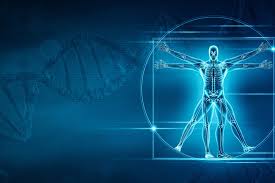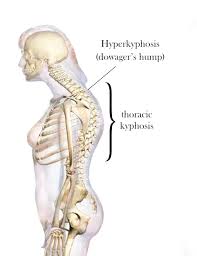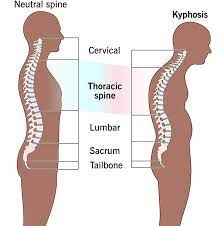

Welcome to the fascinating world where genetics meets posture!
Have you ever wondered why some people have perfectly aligned necks while others seem to carry their heads like a turtle peeking out of its shell?
The culprit might be more than just bad habits or too much screen time—it could be written in your DNA.
Yes, your genetic bone structure plays a significant role in your head posture.
In this article, BestForwardHeadPostureFix will delve into the science behind how your bone structure affects the way you hold your head, the biomechanics involved, and some real-life examples to keep it interesting.
In This Article:
- What Is Genetic Bone Structure?
- The Anatomy of Head Bone Structure
- How Genetics Influence Bone Development
- The Connection Between Bone Structure and Forward Head Posture
- Real-Life Examples: Genetics and Posture Problems
- The Role of Biomechanics in Head Posture
- Genetic Bone Diseases and Their Impact on Posture
What Is Genetic Bone Structure?
Let us start with the basics.
When we talk about genetic bone structure, we mean the way your bones are shaped and formed, based on the genetic blueprint you inherited from your parents.
Your DNA dictates everything from the density of your bones to the curvature of your spine and even the position of your head relative to your neck.
In essence, your genetic bone structure sets the framework for how your entire skeletal system is built.
Think of it like this: If your bone structure genetics predispose you to a slightly forward head position, you may be at higher risk for developing poor posture as you age.
According to Dr. Andrea White from the Journal of Human Anatomy, even subtle differences in bone structure can have a cascading effect on overall posture.
The Anatomy of Head Bone Structure
Now, let’s take a closer look at the head bone structure.
The human skull is made up of several interconnected bones, including the frontal bone, occipital bone, and the vertebrae (leading to C2 neck pain) of the cervical spine.
Your frontal bone structure, for instance, plays a role in the way your head is balanced on your neck.
When you have certain genetic variations, these bones might be positioned in a way that makes your head naturally tilt forward.
This can also affect other bones, such as the cervical vertebrae, which are crucial for supporting your head and allowing for a range of motion.
The American Journal of Orthopedic Research points out that variations in these bone structures are often inherited, meaning your ancestors may have passed down more than just their eye color.
How Genetics Influence Bone Development?
So, how do genetics influence bone development?
Well, genes control the proteins that form your bone tissue.
Factors like bone density, growth patterns, and the alignment of bones are all dictated by your genetic code.
For example, if your DNA contains instructions for denser or longer vertebrae, this could affect the way your head is positioned.
A study from Genetic Research Quarterly highlights that certain genetic markers are linked to variations in spinal curvature.
These variations can either support good posture or make you more prone to forward head posture.
The genes affecting your bone structure do not work in isolation either—they interact with environmental factors like physical activity and nutrition.
The Connection Between Bone Structure and Forward Head Posture
Forward head posture (FHP) is a common condition where the head moves forward in relation to the body’s midline, altering the biomechanics of the cervical spine.
This shift in alignment places excessive strain on the neck, shoulders, and upper back.
Below is a breakdown of how bone structure influences FHP and its effects on the body:
Altered Cervical Spine Alignment:
In an ideal posture, the cervical spine has a natural curve that keeps the head balanced over the shoulders.
When FHP occurs, the upper cervical vertebrae extend while the lower cervical spine shifts forward.
This places stress on the spine and can contribute to degenerative changes over time. As per Physio-Pedia, prolonged FHP can lead to joint misalignment and postural imbalances.
Increased Muscular Load:
The human head weighs around 10-12 pounds, but for every inch it moves forward, the force on the neck muscles doubles.
This additional strain leads to muscle fatigue, stiffness, and tension headaches. TexStar Chiropractic states that excessive forward tilt increases neck pain and can accelerate wear on cervical structures.
Muscle Imbalances:
FHP creates an imbalance between overactive and underactive muscles:
- Overactive muscles: The suboccipital muscles at the base of the skull tighten, restricting movement and contributing to headaches.
- Underactive muscles: The deep cervical flexors, which stabilize the neck, weaken, reducing neck support. According to Spine-Health, these imbalances make FHP harder to correct over time.
Impact on the Thoracic Spine:
FHP often leads to an exaggerated upper back curve (thoracic kyphosis). This rounded posture increases stress on the entire spine.
As per Physio-Pedia, poor spinal alignment can create long-term musculoskeletal issues.
Restricted Respiratory Function:
The forward shift of the head compresses the thoracic cavity, limiting rib cage expansion and reducing lung capacity. This can result in shallow breathing patterns.
The Indo Journal of Physical Medicine and Rehabilitation reports that posture-related breathing restrictions may reduce oxygen intake and increase fatigue.
Compensatory Postures:
To balance the head’s forward position, many individuals develop secondary postural issues such as rounded shoulders or excessive lower back curvature damaging the lumbar spine. These compensatory changes cause additional strain on joints and muscles.
Long-Term Degenerative Changes:
Chronic FHP can accelerate the degeneration of cervical vertebrae and intervertebral discs, increasing the risk of conditions like cervical spondylosis and disc herniation. Over time, this can lead to chronic pain and mobility issues.
Addressing FHP through postural awareness, ergonomic adjustments, and targeted strengthening exercises can help alleviate symptoms and prevent long-term complications.
Correcting spinal alignment early can improve musculoskeletal health and reduce the risk of chronic pain conditions.
Real-Life Examples: Genetics and Posture Problems
Let us put a face to the science.
Take Jane, for instance, a 32-year-old accountant who always struggled with her posture.
Despite her best efforts, she found it hard to maintain an upright position.
After some investigation, she learned that her father and grandfather both had similar issues.
Her genetic bone structure made her more susceptible to forward head posture, even though she worked out regularly and paid attention to her ergonomics.
Or consider Tom, a teenager whose slouched posture was often blamed on his gaming habits.
However, a genetic test revealed that he had an inherited condition that affected the development of his cervical spine, making it more difficult for him to hold his head upright.
The Role of Biomechanics in Head Posture
The biomechanics of forward head posture are a combination of bone structure, muscle function, and gravitational forces.
When your genetic bone structure predisposes you to poor alignment, it sets off a chain reaction.
The muscles in your upper back and neck become strained, and the ligaments holding your vertebrae are put under pressure.
A study from The Journal of Biomechanical Science explains that when the head moves forward from its neutral position, the force on the cervical spine increases dramatically.
This extra load accelerates wear and tear on the vertebrae and can lead to chronic issues like pain and limited mobility.
Genetic Bone Diseases and Their Impact on Posture
Here is how your neck posture gets impacted by your bone issues that emit from your genetic makeup:
Understanding Genetic Bone Disorders
Genetic conditions such as osteogenesis imperfecta, congenital scoliosis, and achondroplasia stem from inherited mutations that affect the way bones form and grow. These disorders often involve defects in collagen production, which is essential for bone strength and structure.Abnormal Spine and Skull Development
In conditions like osteogenesis imperfecta, the vertebrae and skull may develop abnormally, leading to curvature of the spine (scoliosis or kyphosis) and structural instability at the base of the skull. These abnormalities make it difficult to maintain upright posture and proper head alignment.Disrupted Balance and Proprioception
Individuals with genetic skeletal disorders frequently struggle with balance and postural control. Research shows that both static (standing still) and dynamic (during movement) balance are affected, increasing the risk of falls and chronic muscular strain.The Hidden Impact of Mild Asymmetries
Even less severe genetic variations, like mild idiopathic scoliosis or spinal asymmetry, can lead to subtle postural issues that worsen over time if not addressed. These asymmetries may seem minor but can disrupt biomechanics and cause uneven muscle tension.Importance of Tailored Management
Understanding the genetic basis of these conditions allows for individualized interventions. This may include bone-strengthening medications, physical therapy, spinal bracing, or corrective surgeries depending on the severity and type of disorder.Multidisciplinary Solutions
Successful posture management in genetic bone disorders requires collaboration across specialties—genetics, orthopedics, physiotherapy, and rehabilitation. Techniques like posture-specific exercises, balance training, and personalized orthoses can significantly improve function and quality of life.
By recognizing the deep link between genetics and posture, healthcare providers can offer more targeted and effective solutions to support individuals living with these complex conditions.
Takeaway: Understanding How Genetics Shape Your Posture
While we have covered a lot of ground, one thing is clear: your genetic bone structure has a significant impact on your head posture.
From the shape of your skull to the alignment of your cervical spine, these genetic factors set the stage for how your body holds itself.
Though you cannot change your genetic makeup, being aware of these influences can guide how you approach posture care and management.
Your DNA might be a factor, but it’s not the end of the story.
Awareness is the first step, and understanding how your body is built can empower you to work smarter—not just harder—when it comes to maintaining good posture.
References:

